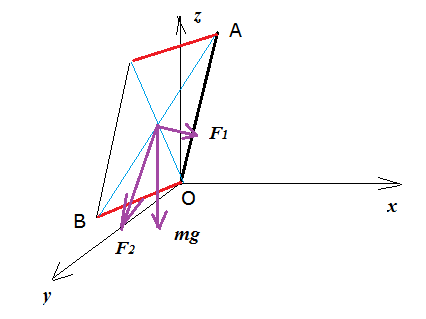A door or gate that is hinged on a leaning post will swing due to gravity. Most of the force of gravity is pulling straight downwards and the bearing surfaces of the hinge are nearly perpendicular to the direction of the gravitational force. This force causes pressure and friction within the hinge which resists movement.
The motion of the gate sideways looks like gravity being able to slide an object across the surface of a slightly un-level table because the gate must move sideways before it can go down. To be specific, I imagine that opposite minor segments of the earths crust are pulling against the door, to one side the small slope of the hinge surface is more in line with the force than the other which determines which side wins.
So, is this type of motion due to an action like a balanced pencil toppling or is it due to tidal forces from adjacent parts of earth crust?

